Games like chess, checkers, and Go are known as "abstract strategy games". These are games with no hidden information and no luck, just a pure contest of skill on a board. I love these kinds of games. The rules are usually simple and quick to explain, and at the same time there's a lot of depth and replay value.
Chess and Go are here to stay (Chess is having a bit of a moment) — but these are not the only abstract strategy games out there. There's actually been a lot of innovation in this field, with lots of great games being developed.
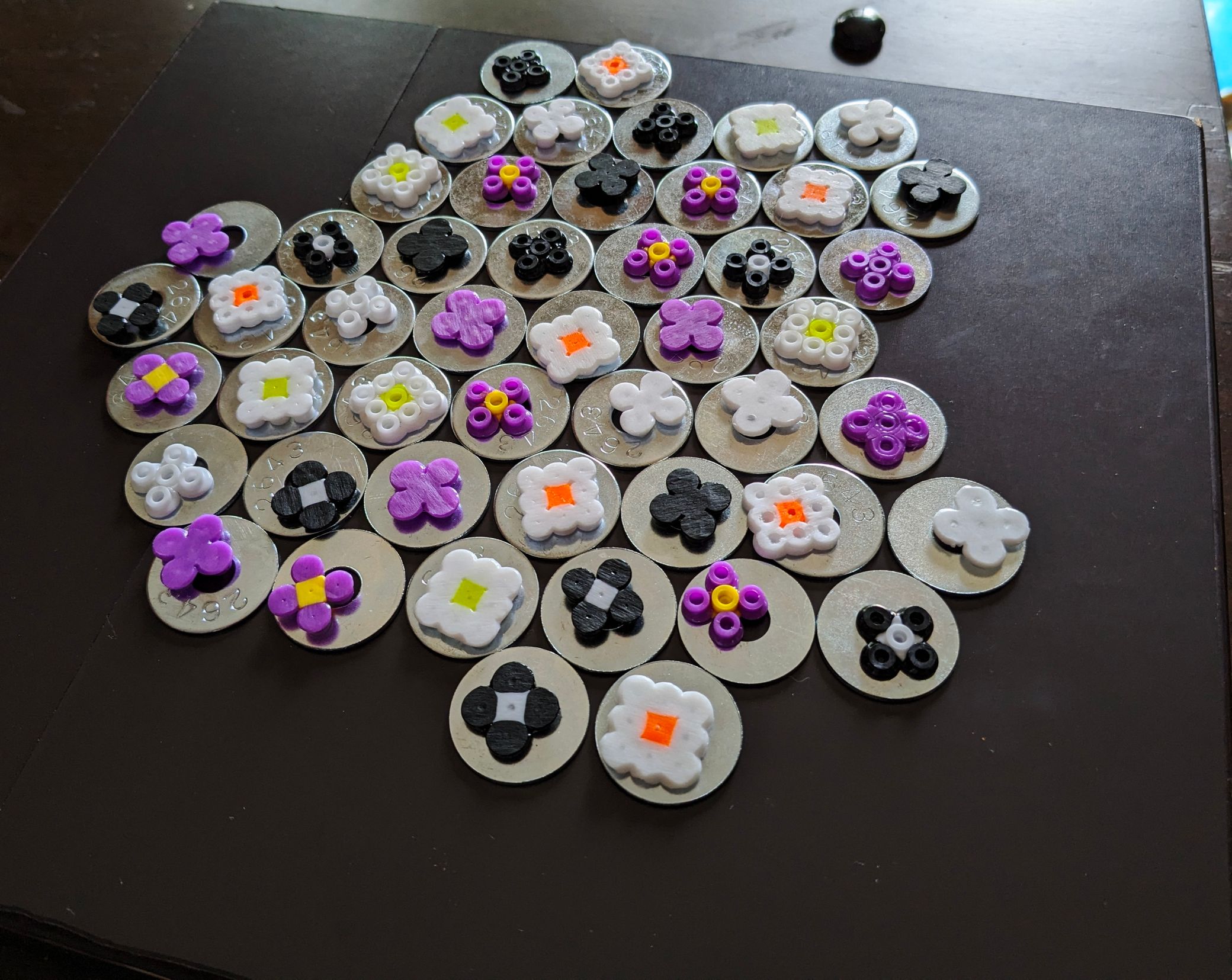
Note that I say "developed" and not "published". There's a gulf between having a great game (right down to the rules, pieces, etc) and having that game in a physical box on a shelf, i.e, getting published. This is because these games are hard to publish: Abstract strategy games tend to use simple and generic pieces with straightforward boards. The main thing that's different is the board layout, or even having several boards at once, like SHŌBU (a game that did get published).
There are online communities around abstract strategy board games, and my favorite one is a fairly recent arrival called Abstract Play — a wonderful site that's entirely free. It's a great place to play many interesting games against people from all over the world, as long as you're willing to be in front of your computer or phone.
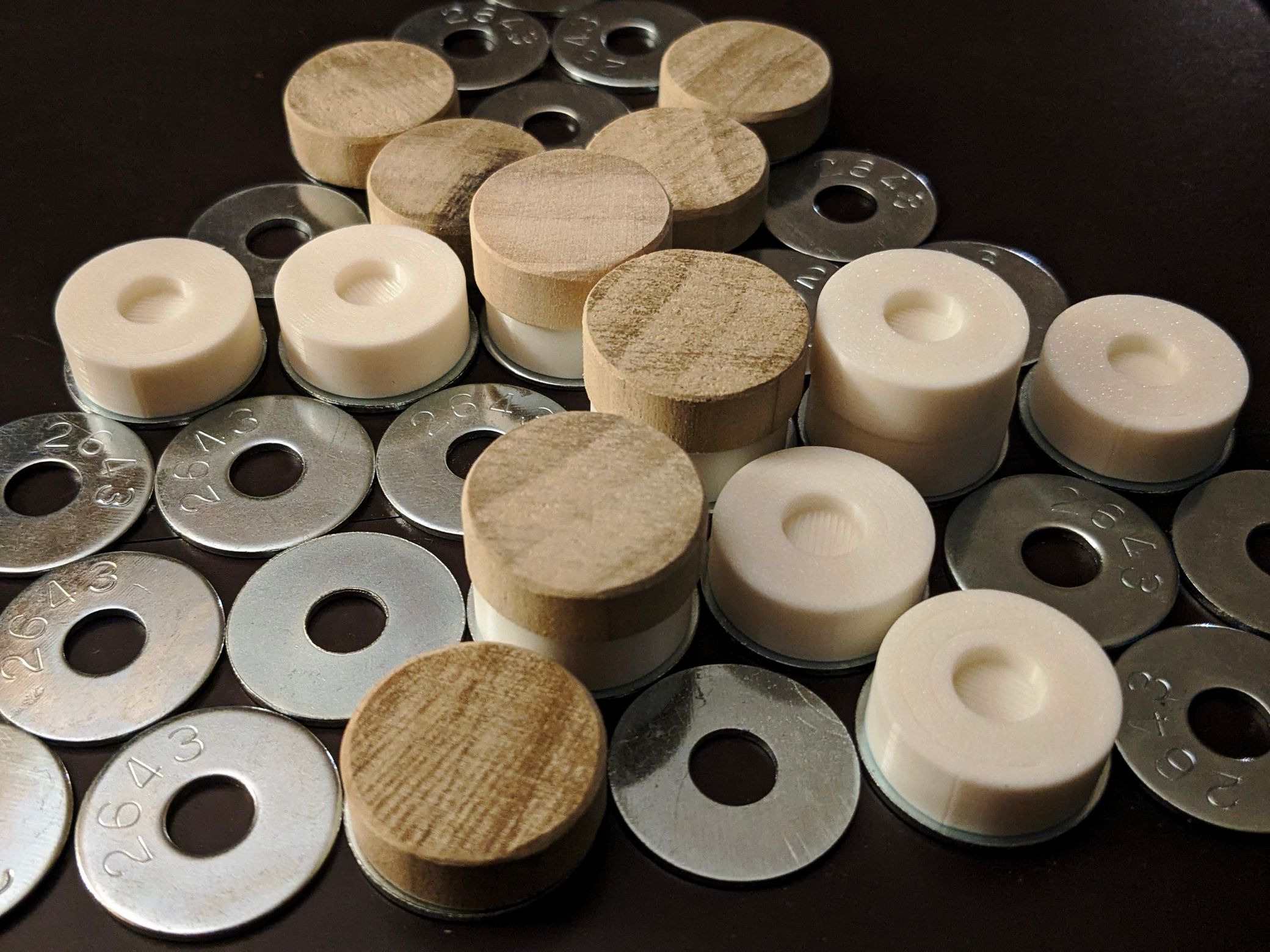
If you're trying to get away from the screen and play these games with a friend IRL, that usually means having to print the board on a piece of paper and then laminate it. That's a bunch of computer work before you can play, and you end up with a laminated sheet, which is not the most pleasant board, and is also not very big.
The Deck of Boards changes all that, and makes it easy and fun to play almost any modern abstract strategy game with one DIY system. So yes, this is not a product, but a system. I found it in the book Mathematical Games, Abstract Games by Neto and Silva. The system is copyrighted to Joao Neto, and it is obscure enough that I am going to break the ZSA Loves "No Links" rule just this once and link to Neto's description from 2003 on his site, with broken images and all: http://di.fc.ul.pt/~jpn/gv/dob.htm.
So yes, it's a little niche — but it's awesome. It unlocked a whole bunch of abstract strategy board games for me.
Some of the games I've played with Deck of Boards are sprinkled throughout this post: Adere, Othello, Qawale, Tintas, and ZERTZ. I've also played Boop with this system (a game that's been getting a bunch of hype and is quite think-y and interesting). Any of these games is well worth your time on its own. Having one system that lets you play them all is even better.
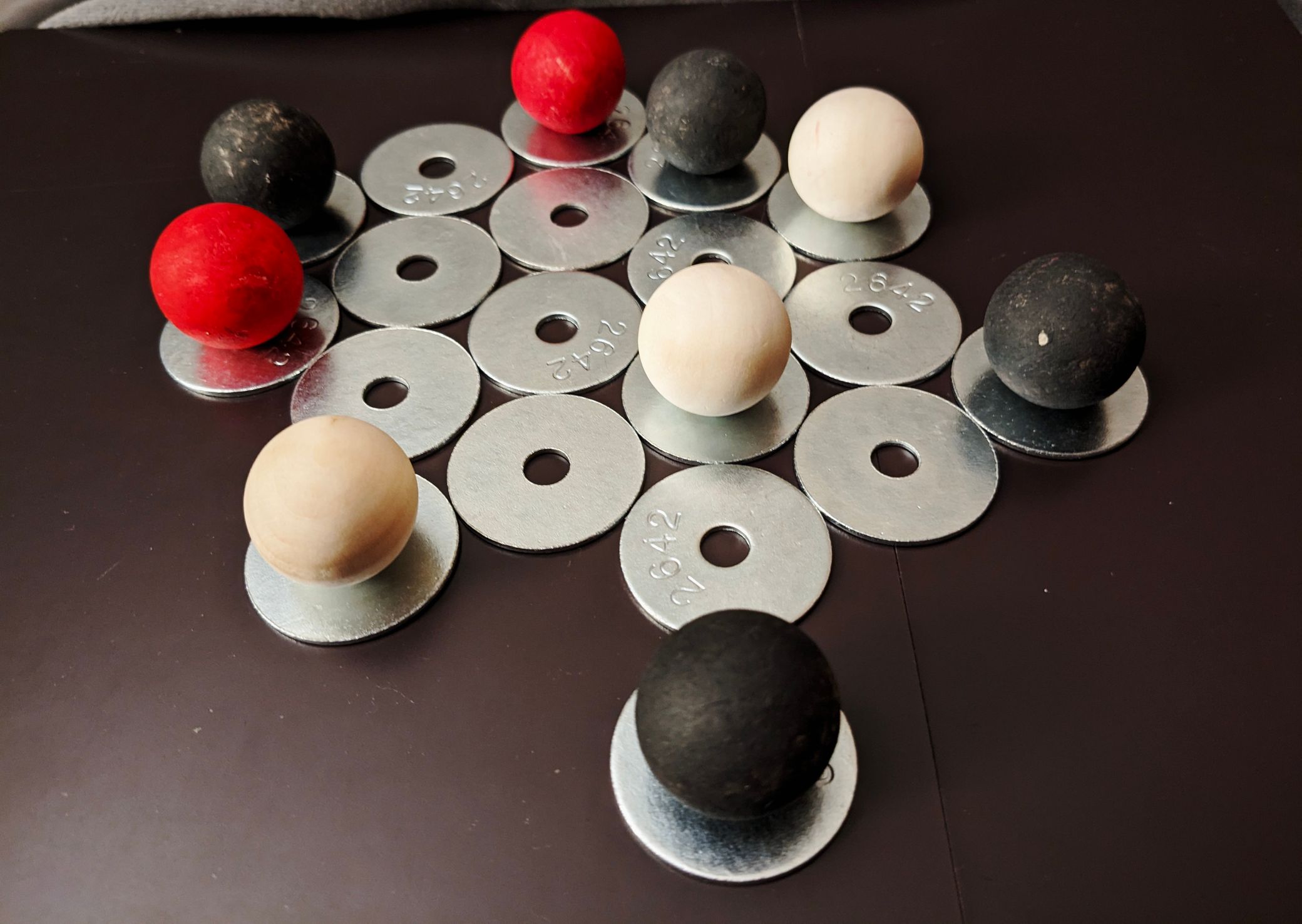
All it is really is magnetic backing that you put a bunch of washers on. I just went to the hardware store and got a bunch of fender washers. The magnetic backing is the stuff people use to make their own fridge magnets. You can get letter-sized sheets of this that are self-adhesive, so they'll stick to whatever you put them on. With these two simple components you can build almost any kind of board you can imagine.
What's fun is that you make the board at the start of your playing session. It's not a bunch of time spent on the computer designing in some app, or finding PDFs and printing and laminating. It's all done by hand with the person you're playing with.
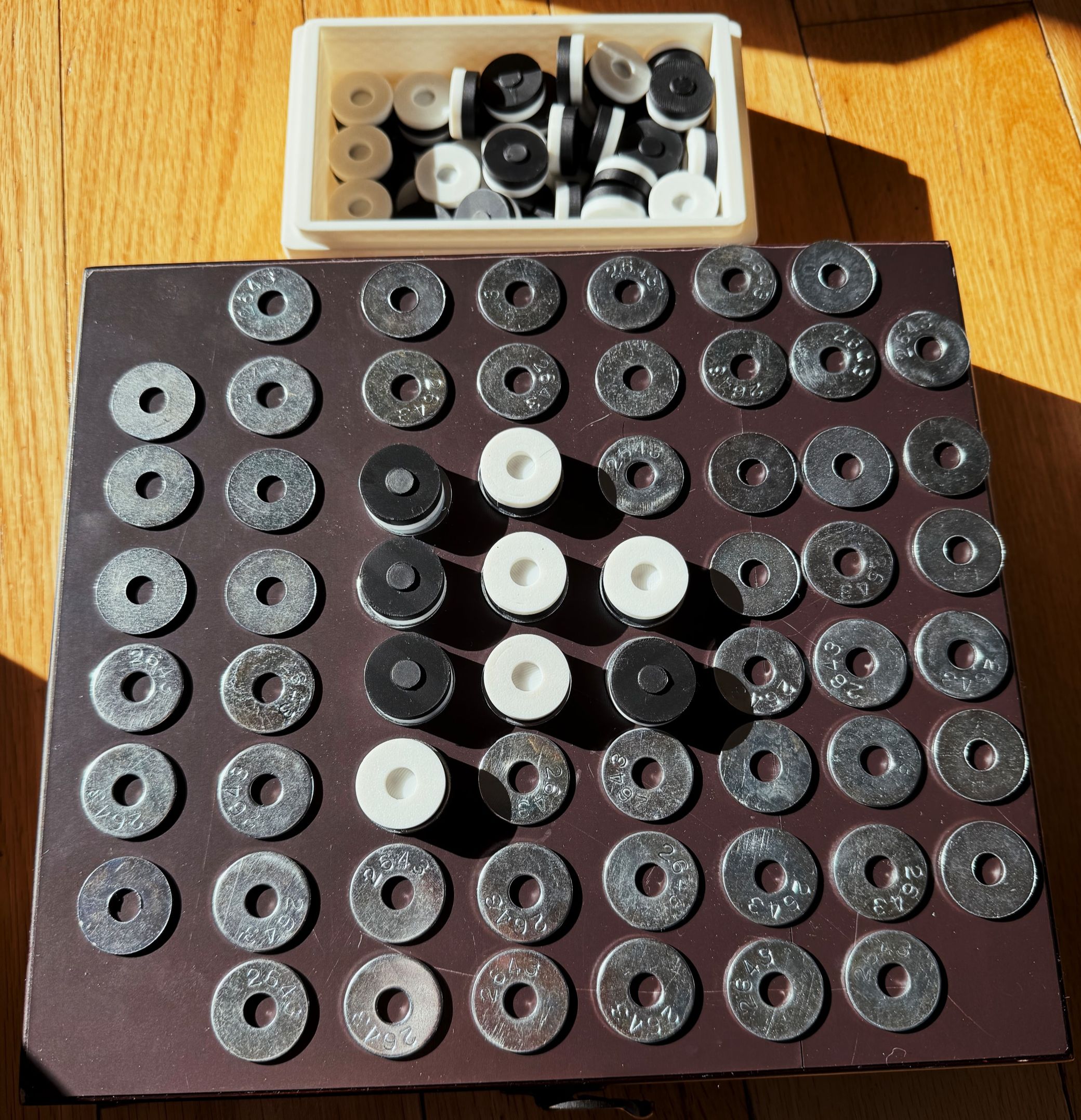
You just need the washers, the magnetic board, and some generic game pieces, and you can create any sort of two-dimensional board layout you can imagine for trying many interesting abstract strategy games. Grids, hexagonal boards, even random layouts. I'm not even sure how many hours we spent playing with the system so far, but it's been a lot.
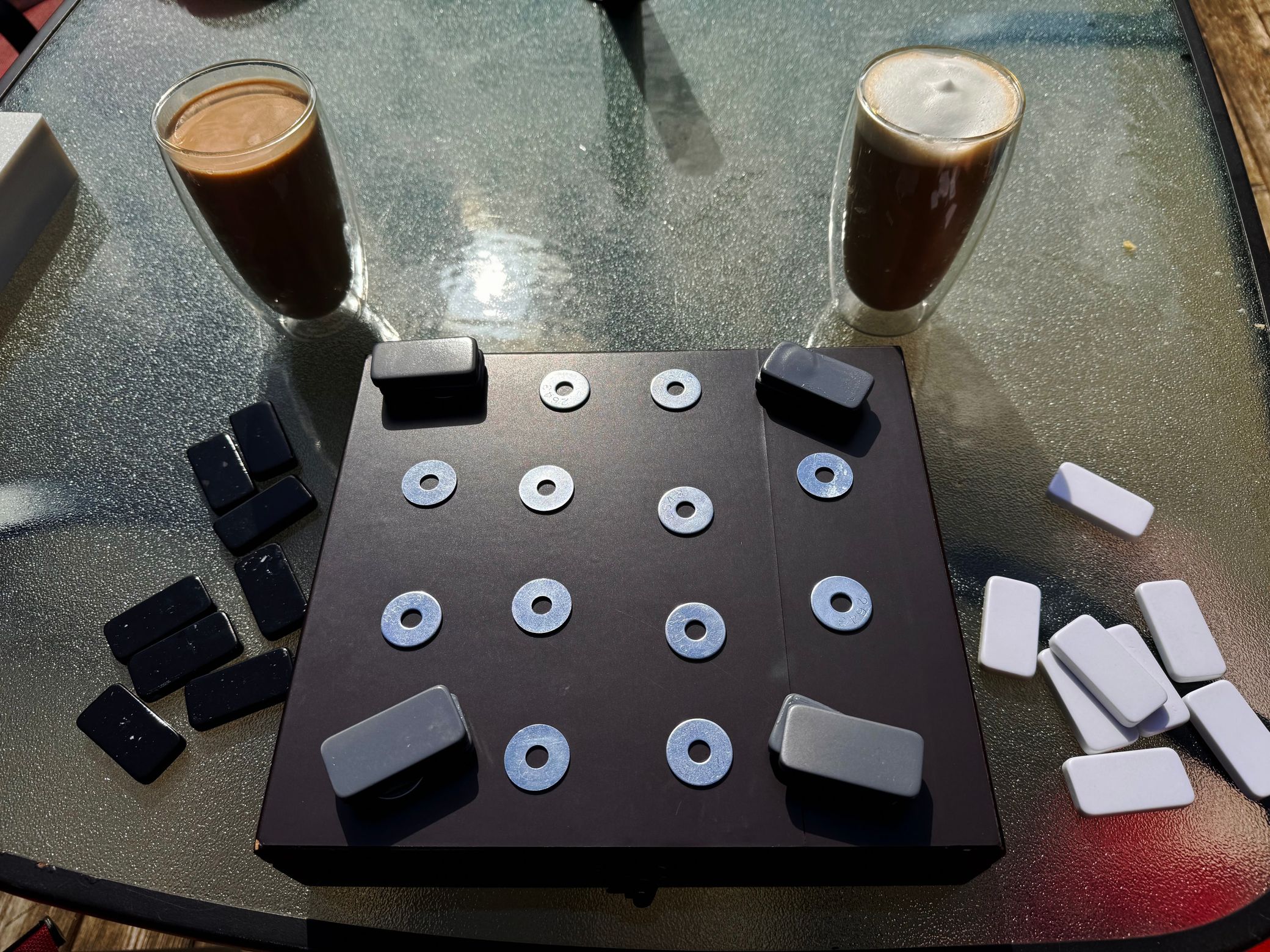
The deck of boards becomes a wonderful playground to experiment with. You can try alternative board layouts to games you know, such as Othello. When you play Othello on a board without the corners, the gameplay is completely different.
The Surprise
The surprise for me was how quick it is to lay out a board. At first I thought I would need many magnetic sheets with pre-made boards, so I can pull out the right board for the game I want to play every time.
When actually using the system, I found out I don't need that. I just have one nice wooden box with all the pieces inside. I glued the self-adhesive magnetic sheet on the lid of the box and whenever I want to play, I just make the board — two minutes and it's done.
Add a partner who also enjoys this type of game, and you've unlocked many hours of fun and endless variety.


